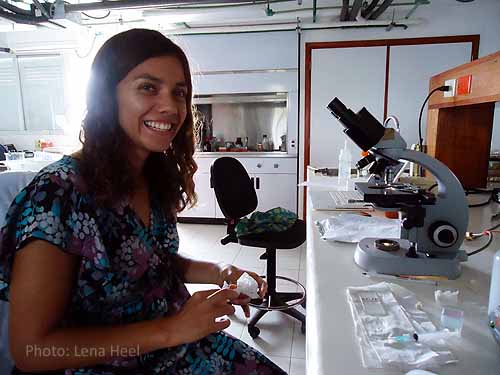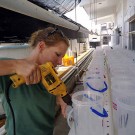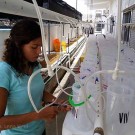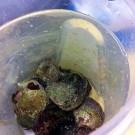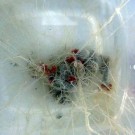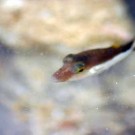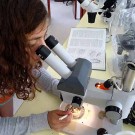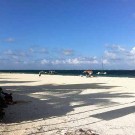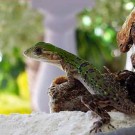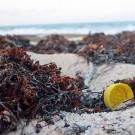Quintana Roo – when listening to Mexicans pronouncing the name of the state located on the southern coast of the Yucatán peninsula, especially the long exhaled “Rrrrrooooooo”, it sounds like something very special – at least for none-spanish-speakers. We, Team Mexico, can assure living here is definitely something special. Well, it includes loooots of work, too, but living here makes definitely up to it.
Undoubtedly one of the very first sensations one finds when coming to Puerto Morelos is its peacefulness. Despite being located in a very touristic zone – the so-called ”Riviera Maya” – there are neither many tourists nor residents here in contrast to Cancun or Playa del Carmen. The latter are two larger cities close by, which are home to many tourists, fiestas, cervezas and a vivid nightlife. The town’s peacefulness is what attracts people to come to Puerto Morelos: Wonderful white sand beaches, turquoise ocean, stunning inland mangroves, a jungle filled with a diversity of different animals and its slow pace. All this contributes to the beauty of the place. So, the two of us enjoy living here every single day even though constant heat and humidity – which are usually very high – generates the feeling of being in a permanent sauna. So, why don’t we jump into the ocean? Well, it does not help at all, since the water temperatures are close to being in a bath tube.
Our ways to work are quite different: Lena, on the one hand, rides a bike from “downtown” to the institute. On the way she has to pass through a mangrove forest and it’s not unusual for her to see iguanas, squirrels, different kind of birds (even vultures), bats and fast running geckos. Furthermore, she also experienced encounters with snakes, badgers, raccoons and even a crocodile. Izchel, on the other hand, lives in the student’s dorms on the other side of town, which is closer to the institute. Therefore her way to work goes along the beach, where you do not see many animals. Instead she enjoys listening to the waves crushing on the beach every day, children playing in the sand or watching boats that take out tourists for a dive or fishing trips. Could be worth, right?
Our working place is the Instituto de Ciencias del Mar y Limnología (Institute of Marine Sciences and Limnology), which belongs to the Universidad Nacional Autónoma de México (Autonomous National University of Mexico: UNAM). UNAM is the largest university of Latin America and the oldest on the continent. Its enormous main campus in Mexico City has lots of art objects and is virtually a town of its own. However, the institute here in Puerto Morelos is quite small and the 14 researchers, a bunch of students and visiting scientists, who work here, create a familiar atmosphere right next to the ocean front. At lunch time you just need to walk 10 meters in order to jump for a quick swim into the ocean or just for enjoying the wonderful view.
This year it is the second time that a GAME project takes place in Mexico under the supervision of Dr. Vivianne Solis-Weiss. Once again the aim of the study is to investigate the influence of microplastics on marine invertebrates. Jonas and Angie, the last year’s GAME participants, worked with O. echinata, a brittle star and our plan was to use this sea star again in order to attain comparable results. However, during our pilot studies we detected that they do not take up the microplastic we use this year due to its smaller size. Because of this, we had to look for other species and finally found two suitable organisms: Eupolymnia rullieri, a marine worm, which is a deposit feeder and Isognomon radiatus (Lister’s tree oyster), a species of bivalve mollusc, which is a filter feeder. We also found out that a very small species of puffer fish, Canthigaster rostrata (Caribbean sharp-nose puffer), which is quite abundant in the Caribbean, take up a lot of microplastic with their food. But while working with them they looked at us with their cute eyes, so we could not imagine killing them later at the end of the experiment.
After having finished our pilot studies, we had several challenges to overcome in order to carry out the main experiment. First of all, we had some difficulties because the package with the microplastic particles did not get through Mexico’s custom and the Fluoranthen took very long to arrive here as well. Both needed to be shipped from Germany to Mexico in April this year. Can you imagine that Mexico’s bureaucracy is tougher than the German one? We tried very hard to get the plastic material but in the end we had to give up and purchased identically sized PVC particles here in Mexico. Luckily at least the fluoranthene finally arrived in Puerto Morelos without further problems.
The installation of the experimental tanks we needed for the main experiment was also a challenge as it involved the setting-up of a flow-through system for 180 aquaria. Not that easy, especially since we only had one big table to place everything on. The table is located outside, what means neither light nor electricity and many, many mosquitos. Lena’s legs were not visible during the first weeks of her stay, since they were completely covered with mosquito bites. At least now she has her head full of advices and recommendations how to avoid mosquito bites supplied by many different people with even more diverse opinions what is the best method. Some said she should eat a lot of garlic and vitamin B, others suggested wearing long, wide, white cloth. At least everyone agreed that one adapts to it over time. And this proved to be true. Now her legs are almost mosquito-bite free. But most certainly this is result of using stronger repellent and not because the mosquitos don’t like to bite her anymore.
Jonas and Angie left a little groundwork behind for us when they returned to Kiel last year. But their system was not big enough to supply so many replicates with sea water. We have more than twice the number of units that they had. Therefore, we drilled countless holes, screwed and glued pipes together, sketched, tried out and discussed until our heads were smoking. Also countless trips to Cancun were part of this period, since online-shopping or shopping in Puerto Morelos were out of the question. Not to mention the Mexican post system: If the things arrived at all – it took forever. However, in the end and with the support of many helpers and Vivianne’s husband everything was set-up. At least that’s what we assumed. But right when we wanted to start the experiment, another research project was launched, which took up all the sea water from the supply system so that everyone else’s systems crushed. We had to tear apart and reinstall everything! On top of this all, it happened exactly when everyone else left for holidays. During this time we virtually lived in the institute, but we would not be GAME participants, if we did not get a grip on this ;)!
There were a bunch of other smaller or larger challenges during the past month but now everything is running very well overall and we feel like our organisms’ moms when checking on them, cleaning their tanks from algae, or suffering when one of the worms died. We have certainly learned a lot in meeting and tackling the challenges involved in this experiment. The only thing we still did not get used to are the mosquitos which feel quite too well around our set-up. But as we mentioned in the beginning: Living here in Puerto Morelos is something very special. So nothing can spoil our mood.
- Lena drilling holes for the water pipes.
- Izchel cutting them down to the right length.
- The tree oyster Isognomon radiatus is our filter feeding test species.
- Individuals of the marine polychaete Eupolymnia rullieri, which we use as the deposit feeding species in our experiments.
- The puffer fish Cantigaster rostrata would also be a suitable test species, but it is simply too cute.
- Izchel checking whether the bivalves ingested the microplastic particles.
- Izchel's daily way to work.
- Among the creatures that Lena frequently encounters on her way to work, this is rather one of the smaller guys..
- Marine plastic debris is a common phenomenon along the coast of the Yucatán peninsula.
